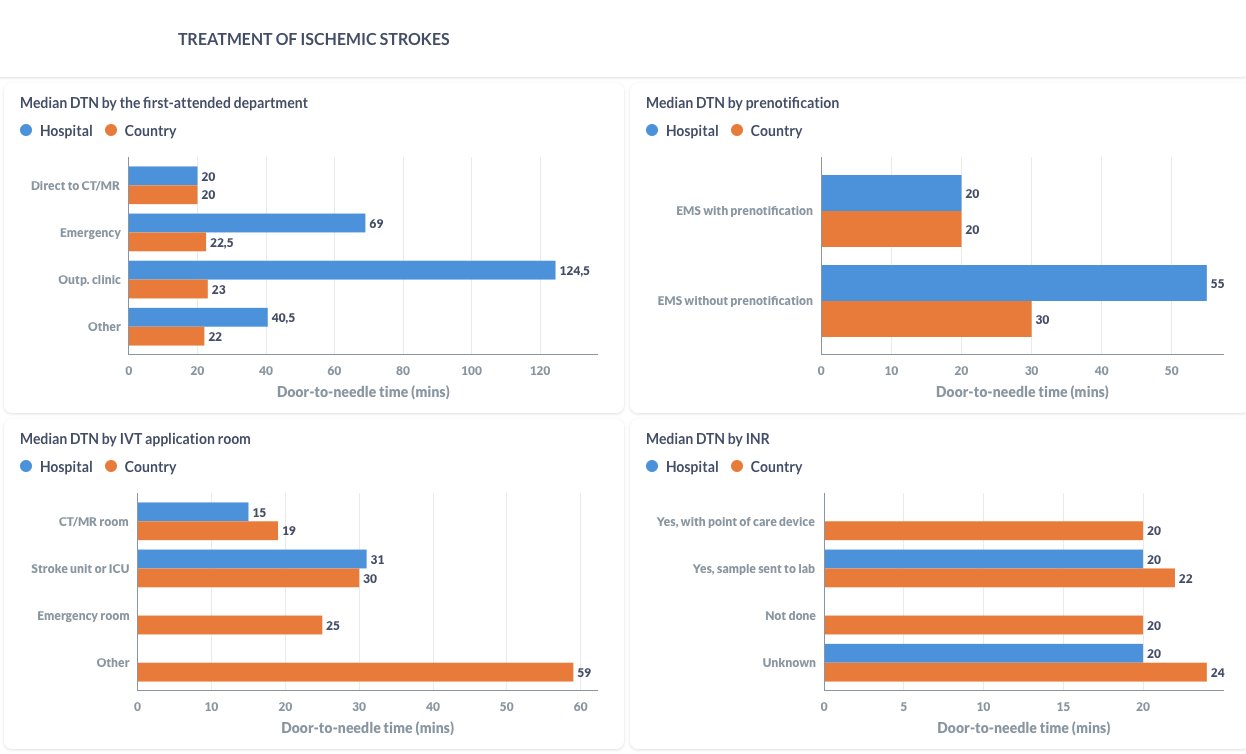
Bảng điều khiển RES-Q cập nhật hiện cho thấy thời gian DTN là một chức năng của bốn hành động ưu tiên chính được Angels khuyến nghị, cụ thể là thông báo trước viện EMS, đưa bệnh nhân trực tiếp đến CT, xét nghiệm POC để tìm INR và bắt đầu điều trị tại CT. Tác động của những hành động này đối với thời gian điều trị hiện có thể nhìn thấy trong nháy mắt.
Bảng điều khiển bệnh viện nâng cao mới cung cấp phản hồi về tất cả các biến số được thu thập trong RES-Q. Giảm thời gian DTN là một trong những chỉ số quan trọng nhất để theo dõi cải thiện chất lượng trong chăm sóc đột quỵ và RES-Q hiện hiển thị phản hồi DTN dựa trên các tình huống khác nhau.
Các trường dữ liệu mới đã được thêm vào theo đề xuất của trưởng dự án Angels Jan van der Merwe. Tiến sĩ Robert Mikulik, người sáng lập và điều phối viên của Res-Q, đã xác nhận vào đầu tháng 2 năm 2023 rằng bảng điều khiển RES-Q tiêu chuẩn hiện đã trực quan hóa DNT như một chức năng của tất cả bốn hành động ưu tiên.
Giờ đây, các bệnh viện có thể xem nhanh:
• thời gian DTN khi bệnh viện được thông báo trước so với không thông báo trước viện.
• thời gian DTN như một chức năng của nơi nhập viện, tức là trực tiếp đến CT/MRI, khoa cấp cứu hoặc phòng khám ngoại trú.
• thời gian DTN khi POC được sử dụng cho INR so với khi máu được gửi đến phòng thí nghiệm.
• thời gian DTN như một chức năng của địa điểm bắt đầu IVT, tức là phòng CT/MRI, đơn vị đột quỵ/ICU hoặc Phòng cấp cứu.
Trong ví dụ trên, bệnh viện đạt được thời gian DTN là 20 phút đối với bệnh nhân được chụp CT trực tiếp so với 69 phút đối với bệnh nhân nhập viện vào khoa cấp cứu. Khi bệnh viện được thông báo trước về sự xuất hiện của bệnh nhân đột quỵ, điều trị bắt đầu sau 20 phút thay vì 55 phút mà không cần thông báo trước viện EMS.
Thời gian DTN trung bình cho bệnh nhân được điều trị bằng IVT trong phòng CT là 15 phút. Nếu bệnh nhân được chuyển đến đơn vị đột quỵ hoặc ICU trước khi điều trị, thời gian DTN đã tăng lên 31 phút.
Bảng điều khiển mới sẽ khuyến khích các bệnh viện thực hiện các hành động ưu tiên quan trọng này một phần trong phác đồ điều trị đột quỵ của họ, Jan van der Merwe nói.
“Nhìn thấy là tin tưởng. Chúng tôi tin tưởng rằng dữ liệu này sẽ truyền cảm hứng cho các bệnh viện thực hiện các hành động đã biết để giảm thời gian DTN.”


